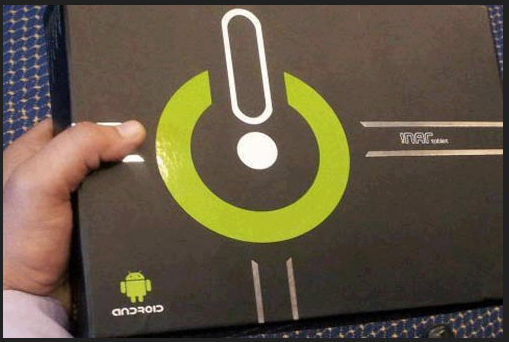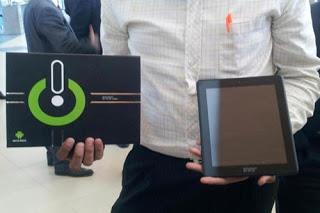Samsung may have loaded up its 13-megapixel smartphone shooter with playful settings, but it didn't skimp on raw image prowess.

The Samsung Galaxy S4's camera goes for gold.
(Credit: Josh Miller/CNET) Samsung has absolutely
stuffed its
Galaxy S4's 13-megapixel camera with settings and modes, but non of that matters if the phone's image quality can't stand up to the hype.
And so, this smartphone shootout, between the Galaxy S4's top
Android rival, the
HTC One, and another beacon of smartphone photographic excellence, the
iPhone 5.
For its part, the HTC One has a camera it calls "ultrapixels," which is actually a 4-megapixel camera. Although there aren't a lot of other specific details available, it's pretty clear that each smartphone camera has different focal lengths.One important thing to note is that all three phones have very different sensors. The Galaxy S4 hosts a 13-megapixel camera, and the
iPhone 5 has an 8-megapixel shooter.
A note on my methodology: I took all photos at the same time and from the same vantage point. In most cases, I used the camera's automatic mode, and kept flash in auto mode as well. I want to show how well the cameras handled the common scenarios I set up without any special adjustments. If you're more photographically inclined, you'll be able to tease out even better images using manual settings and other modes.
Most pictures are resized and cropped; I'll point out if they're crops from full-resolution images. When it came time to evaluate the photos, I called on CNET camera editor Josh Goldman to review them with me. Down the line, Josh plans to put the Galaxy S4 camera through his usual battery of camera tests in New York. For now, though, I hope you enjoy this San Francisco shootout.
Arrow up
A very cool, colorful, and tucked-away statue stacks up arrows (or are they pixelated people?) in a towering arrangement.
Galaxy S4
 (Credit: Jessica Dolcourt/CNET)
(Credit: Jessica Dolcourt/CNET)HTC One
 (Credit: Jessica Dolcourt/CNET)
(Credit: Jessica Dolcourt/CNET)iPhone 5
 (Credit: Jessica Dolcourt/CNET)
(Credit: Jessica Dolcourt/CNET)The verdict:
Josh and I thought that Samsung's Galaxy S4 colors look the most accurate, if a little cool. The image is also the most evenly exposed. HTC's One overexposes the shot, with blown-out yellow, and a lot of lost highlight detail in the background and in the reflection of the glass door on the left. However, you can see the seam on the black statue most clearly in the HTC One's shot. For its part, the iPhone underexposes the image a bit, but the rounded-out colors are a little more pleasing.
Ebb and flow
I shot these pictures of a fountain fixture in a nearby plaza.
Galaxy S4
 (Credit: Jessica Dolcourt/CNET)
(Credit: Jessica Dolcourt/CNET)HTC One
 (Credit: Jessica Dolcourt/CNET)
(Credit: Jessica Dolcourt/CNET)iPhone 5
 (Credit: Jessica Dolcourt/CNET)
(Credit: Jessica Dolcourt/CNET)The verdict:
The Galaxy S4 loses this round. Its camera didn't seem to know where to focus, so it chose the steadiest thing around: the block of rock within the fountain. HTC's One is the clear winner, likely leaning on fast shutter speed to successfully freeze the running water. Of all three pictures, this image is also the most focused across the entire plane, but as before, the One blew out the detail in the water's the splash. The iPhone 5, meanwhile, fits right in between the two.
We also noticed that the HTC One's color is off, tending toward blue. You see that replicated in many images throughout this test.
Fountain close-up
Here's the cropped, full-resolution portion at the focal point in the water's stream.
Galaxy S4
 (Credit: Jessica Dolcourt/CNET)
(Credit: Jessica Dolcourt/CNET)HTC One
 (Credit: Jessica Dolcourt/CNET)
(Credit: Jessica Dolcourt/CNET)iPhone 5
 (Credit: Jessica Dolcourt/CNET)
(Credit: Jessica Dolcourt/CNET)The verdict:
Up close, the One's dominance in this shot is even more crystal clear, though Josh notes that the water's definition is oversharpened and "crunchy."
Strictly forbidden
Don't park here. They really mean it.
Galaxy S4
 (Credit: Jessica Dolcourt/CNET)
(Credit: Jessica Dolcourt/CNET)HTC One
 (Credit: Jessica Dolcourt/CNET)
(Credit: Jessica Dolcourt/CNET)iPhone 5
 (Credit: Jessica Dolcourt/CNET)
(Credit: Jessica Dolcourt/CNET)The verdict:
All three cameras did a nice job capturing this image, but the Galaxy S4 has the advantage for its most accurate color representation and lowest levels of noise. The One was our least favorite, losing a lot of background detail. The red was a little little rusty as well, a symptom of the camera's overall blue cast. Of the pictures, the iPhone 5's saturated red makes for a more lively image.
Signage, up close
These photos are full-resolution crops of the original, and all different sizes.
Galaxy S4
 (Credit: Jessica Dolcourt/CNET)
(Credit: Jessica Dolcourt/CNET)HTC One
 (Credit: Jessica Dolcourt/CNET)
(Credit: Jessica Dolcourt/CNET)iPhone 5
 (Credit: Jessica Dolcourt/CNET)
(Credit: Jessica Dolcourt/CNET)The verdict:
The artifacts around the lettering are strongest in the HTC One and iPhone 5 pictures, which you can see in slightly jagged edges there. Colors are a little more accurate on the GS4, and while there's still noise, there's less of it.
Heads up
There's quite a lot of texture in this is clay noggin. I focused on the mouth, such as it is.
Galaxy S4
 (Credit: Jessica Dolcourt/CNET)
(Credit: Jessica Dolcourt/CNET)HTC One
 (Credit: Jessica Dolcourt/CNET)
(Credit: Jessica Dolcourt/CNET)iPhone 5
 (Credit: Jessica Dolcourt/CNET)
(Credit: Jessica Dolcourt/CNET)The verdict:
This one's an interesting shot because it looks so different across the board. The S4's image is my favorite overall, once again blessed with the most even exposure of the three. You can see the clay detail and also some definition in the background street scene. The One's statue looks the brightest in the dueling light, but it's hopelessly overexposed, which you can tell when you take in the blown-out tree leaves, strip of white street, barely yellow meter, and color-striped taxi.
Although the iPhone produced the darkest image, it's the only one where you can see the actual road and the best taxi cab detail. There's more shadow detail as well. This may be the most technically proficient picture of the three, but my vote goes to the Galaxy S4 in this round.
Sweet ride
What better way to see how the phone cameras handle color than this awesome scooter?
Galaxy S4
 (Credit: Jessica Dolcourt/CNET)
(Credit: Jessica Dolcourt/CNET)HTC One
 (Credit: Jessica Dolcourt/CNET)
(Credit: Jessica Dolcourt/CNET)iPhone 5
 (Credit: Jessica Dolcourt/CNET)
(Credit: Jessica Dolcourt/CNET)The verdict:
All three of these photos look pretty nice. Samsung and iPhone produce rich, vibrant reds (the One once again is blued). If you look closely at the front of the Vespa, you'll notice that the HTC phone and, to a lesser extent, the iPhone, wash out the surface. For another example, fix your eyes on the mount just to the left of the handlebar area on the right.
Portrait
I took these photos indoors at dusk in a room with artificial lighting, focusing on her nose. I took multiple shots with each camera, and used automatic mode, so the camera algorithms could decide to use flash or not.
Galaxy S4
 (Credit: Jessica Dolcourt/CNET)
(Credit: Jessica Dolcourt/CNET)HTC One
 (Credit: Jessica Dolcourt/CNET)
(Credit: Jessica Dolcourt/CNET)iPhone 5
 (Credit: Jessica Dolcourt/CNET)
(Credit: Jessica Dolcourt/CNET)The verdict:
I'm still not sure what happened here. None of the three photos turned out as expected, which is to say, in focus. In fact, all three images look pretty terrible. The Galaxy S4 fired its flash, which filled in the picture but also made the subject look sallow.
The HTC One never focused and never attempted to use flash; it's the blurriest of the bunch, and this is (believe it or not), the best of the three shots I took. While the iPhone 5 picture is noisy, it's arguably better-looking than the GS3 picture, because it makes use of natural light. I think this one's a toss-up for me, but if I were sharing one of them over e-mail or through a social network, I'd choose the GS4.
On the rocks
I shot this cocktail without any flash in a very low-lit indoor environment.
Galaxy S4
 (Credit: Jessica Dolcourt/CNET)
(Credit: Jessica Dolcourt/CNET)HTC One
 (Credit: Jessica Dolcourt/CNET)
(Credit: Jessica Dolcourt/CNET)iPhone 5
 (Credit: Jessica Dolcourt/CNET)
(Credit: Jessica Dolcourt/CNET)The verdict:
Oh, Samsung, what have you done? The GS4 camera clearly picked the wrong light source to focus on, creating an inky low-light image, while the HTC One's picture actually came out strong enough to tell that you're looking at a beverage in a glass. Strange highlights and a floating blue window put a hitch in the One's victory dance, but you get the general idea. The iPhone 5 takes this round with the best colors, evenness, and detail.
It's all textual
A single, flickering candle illuminated this drink menu, taken indoors with the flash off. I focused on the large "R" and kept this cropped image at full resolution. These images represent the best of three shots per camera.
Galaxy S4
 (Credit: Jessica Dolcourt/CNET)
(Credit: Jessica Dolcourt/CNET)HTC One
 (Credit: Jessica Dolcourt/CNET)
(Credit: Jessica Dolcourt/CNET)iPhone 5
 (Credit: Jessica Dolcourt/CNET)
(Credit: Jessica Dolcourt/CNET)The verdict:
This is one of those photo setups that's pure stress test, though few would likely recreate this exact scene. Once again, Samsung's Galaxy S4 completely wiped out, which leaves the bout for the top low-light prize for this full-resolution crop between the iPhone 5 and HTC One. The One his the technically better shot when you account for the highest amount of detail and least amount of color noise. The iPhone 5 image contains a tremendous helping of noise, but I think that if you were to take a photo of a menu like this in its entirety, the iPhone's picture would be the easiest to read.
Final assessment
Josh and I both agree that the HTC One's camera is the weakest of the three. Its color reproduction is cooler and adds a blue cast to shades. It also overexposes more shots and conveys the least amount of detail. However, the One's low-light performance was pretty good, and in many instances, we'd be happy using a picture from the One in casual photo-sharing situations.
When it comes to the out-and-out winner, the tussle between the iPhone 5 and Samsung Galaxy S4 grows murkier. In well-lit photos, the choice for the "better" camera is a coin toss. The iPhone's slight underexposure captures the most detail across a scene, but the GS4 camera produced a lot of the photos we liked best.
Source: http://www.cnet.com/8301-17918_1-57581522-85/samsung-galaxy-s4-shootout-versus-htc-one-iphone-5/#ixzz2RkwuKmqa






















